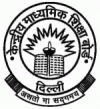(Sample Paper) CBSE Class X Summative Assessment-II Science:2011
Disclaimer: This website is NOT associated with CBSE, for official website of CBSE visit - www.cbse.gov.in
SAMPLE TEST PAPER
CBSE X Submitted Assessment II: 2011
Subject – Science
Questions
1) Who disproved the vital theory?
(a.) Buck Minsterfuller
(b.) Friedrich wohler
(c.) Tremblay
(d.) Shell
2) To prevent the misuse of alcohol which poisonous substance is added in it?
(a. Methanol
(b.) Ethanol
(c.) Butanol
(d.) Ether
3) Which Substance is used as pickles preservative?
(a.) Ether
(b.) Acetic acid
(c.) Vinegar
(d.) Ethanoic acid
4) Carboxylic acids are called.
(a.) Inorganic Compound
(b.) Organic Compound
(c.) Hydrocarbon Compound
(d.) Acetic acid
5) In modern periodic table how many columns are vertically arranged?
(a.) 16
(b.) 18
(c.) 14
(d.) 20
6) In what way Mendeleev's published his periodic table.
(a.) Radio
(b.) Television
(c.) Magazine
(d.) Newspaper
7) In an experiment to determine the focal length of a convex lens, a student
obtained a sharp inverted image of distant tree on the screen behind the lens.
He / She then removed the screen and looked through the lens in the direction of
object. She / He will see. -
(a.) An inverted image of tree at focus of lens.
(b.) No Image as the screen has been removed
(c.) A blurred image on the wall of laboratory
(d.) An erect image of the tree on the tree on the lens
8) For doing experiment on verifying the Causes of reflection of sound. A
student sets up his apparatus as shown. The experiment is more likely is get
preformed successfully if the screen shown is a.
(a.) Well polished plane mirror
(b.) Wooden board with many holes in it
(c.) A foam padded board
(d.) A sheet of pure white cloth
9) The focal length of a concave mirror depends on it.
(a.) Size
(b.) Radius of curvature
(c.) Pole
(d.) Center of curvature
10) The diameter of the reflecting surface of spherical mirror is called.
(a.) Focal length
(b.) Radius of curvature
(c.) Aperture
(d.) Principal focus
11) To form complete image of the object height of the mirror is.
(a.) Double
(b.) Half
(c.) One - Fourth
(d.) Same size as object
12) The magnification of plane mirror is
(a.) -1
(b.) +1
(c.) 0
(d.) Infinitive
13) Which of the following reproduce by binary fusion.
(a.) Amoeba
(b.) Paramecium
(c.) Euglena
(d.) All of these
14) Which one is male gamete
(a.) Stamen
(b.) Carpel
(c.) Petal
(d.) Sepal
15) Which are unisexual flowers
(a) Hibiscus
(b) Mustard
(c) Lotus
(d) Jasmine
16) Which of the following method of contraception protects from acquiring
sexually transmitted diseases
(a) Oral pills
(b) Condom
(c) Copper-T
(d) Surgery
17) For his experiments on heredity, Mendal used
(a) Papaya plants
(b) Potato plants
(c) Pea plants
(d) Pear plants
18) Who gave the ten percent law?
(a) Mendel
(b) Darwin
(c) Kindemann
(d) Stanley L. miller
19) The Bishnoi community of Rajasthan is associated with the conservation of
(a) Coal and petroleum
(b) Forest and wildlife
(c) Water resources
(d) Aboitic environment
20) Amrita Devi Bishnoi National Award is given for ……conservation
Section-B
1. What is catenation?
2. Name the structure of diamond and graphite?
3. Which organic compound made in laboratory. By whom and when?
4. Name that inorganic compound by which organic compound is formed also
write their formula.
5. Why carbon atoms always form covalent bond?
6. Name two elements which shows catenation but they are unstable?
7. Why kitone group can never occur at the end of carbon chain?
8. Why do substances burn with flame? Name their types?
9. Why mixture of acetylene and air is not used for welding?
10. People use a variety of methods to wash cloths. Usually after adding the
shop, they beat the cloths on a stone or beat it with a paddle, scruib with a
brush or mixture is agitated in a washing machine. Why is agitation necessary to
get clean clothes?
11. Besides gallium, which other elements have since been discovered that
were left by Mendeleev in his periodic table?
12. Explained why stars twinkle but why plants do not twinkle?
13. Why do we have two eyes for vision and not just one?
14. When and by whom dispersion of light experimentally discovered?
15. What is rainbow and how it is formed?
16. Why danger signal lights red in colour?
17. Define and give their lens to correct-
(a) Myopia
(b) Hypermetropia
(c) Presbiopia
18. What is linear magnification?
19. Allosomes (Define)
20. Differentiate between homologous and analogous organs with an
example.
21. Explain how sex is determined in human beings?
22. Who is responsible for the sex of the child and why?
23. What is the full form of—
STD-
AIDS-
HIV-
IUCD-
UNEP-
24. What is ozone and how it is formed?
25. What is silvi culture and write its advantages?
26. What is the importance of variation?
